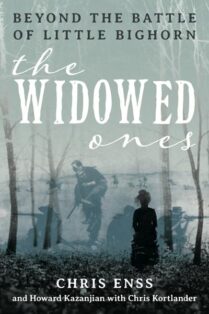Enter now to win a copy of
The Widowed Ones: Beyond the Battle of the Little Bighorn

Thirty-four-year-old Elizabeth Bacon Custer filed into the Methodist church in Monroe, Michigan, on August 13, 1876, with hundreds of others attending the memorial service of her husband of twelve years, General George A. Custer, and five of his officers killed at the Battle of the Little Bighorn. She was adorned in a black bombazine (silk) dress with black fringe and a black bonnet with a black crepe veil. The mourning outfit would be her standard wardrobe for years to come. She walked mechanically, but purposefully, down the center aisle, her eyes focused on a reserved seat in the front pew. Friends and acquaintances smiled piteously at her as she passed; some refrained from looking at her at all. Those who knew of her and her well-known husband by reputation only stood on tiptoe and craned their necks to watch her every move.
The heat that afternoon was sweltering. Members of the Baptist and Presbyterian churches had joined the Methodists to pay tribute to the slain soldiers who were raised in the town located on the western shores of Lake Erie. The combination of congregants along with the other funeral goers made the atmosphere in the house of worship oppressive. Halftones from the bright sun diffused through the stained-glass windows cast a colorful light on the portrait of General Custer sitting on the organ next to a magnificent podium in the very front where the pastor delivered his weekly sermons. Custer’s picture was surrounded with an evergreen wreath, and two sabers crossed underneath the picture. The names of Captain Yates and Henry Armstrong Reed were scrawled across ribbons encompassing another display in evergreen.

To learn more about the Elizabeth Custer and the other widows read
The Widowed Ones: Beyond the Battle of the Little Bighorn.

